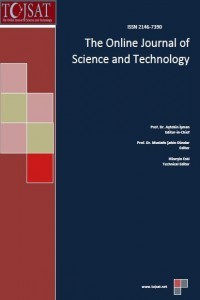Mycorrhizal status of main spontaneous or introduced forest trees in El Tarf province (Algerian North-east)
Mycorrhizal status of main spontaneous or introduced forest trees in El Tarf province (Algerian North-east)
___
- Agerer, R. (1987-1996). Colour Atlas of ectomycorrhizae. Einhorn-Verlag Eduard Dietenberger, Schwäbisch Gmünd.
- Bä, A., Duponnois, R., Diabaté, M. & Dreyfus, B. (2011). Les champignons ectomycorhiziens des arbres forestiers en Afrique de l’ouest. IRD Editions.
- Belair de, G. (1990). Structure, fonctionnement et perspectives de gestion de quatre complexes lacustres et marécageux (El-Kala Est algérien). PhD Thesis U.S.T.I Montpellier University.
- Daniels, B. A. & Skipper, H. D. (1982). Methods for the recovery and quantitative estimation of propagules from soil. In: Methods and principles of mycorrhizal research. Schenck, .C. (ed). Amer. Phyt. Soc., ( pp 29-35).
- Dommergues, Y. Duhoux, E. & Diem, H. G. (1999). Les arbres fixateurs d’azote. Caractéristiques fondamentales et rôle dans l’aménagement des écosystèmes méditerranéens et tropicaux. CIRAD, Espace, FAO et IRD (eds).
- Emberger, L. (1955). Une classification biogéographique des climats. Rec. Trav. Lab. Oceol. Zool., Fac. Sci. Montpellier Ser. Bot., 7, (pp 1-43).
- Garbaye, J. & Guehl, J. M. (1997). Le rôle des ectomycorhizes dans l’utilisation de l’eau par les arbres forestiers. Revue Forestière Française, n° spécial, (pp 106-120).
- Gerdemann, J. W. (1963). Spores of mycorhizal endogone species extracted from soil by wet sieving and decanting. Trans-Br-Mycol Soc 46, (pp 234-235).
- Joleau, D. L. (1936). Etude géologique de la région de Bône et de la Calle. Bull. Serv. Carte. Géol. De l’Algérie. 2° série stratigraphique. Description régionale n° 2.
- Kormanik, P. P., Bryan, W. C. & Schultz, R. C. (1980). Procedures and equipment for staining large numbers of plant root samples for endomycorrhizal assay. Can. J. Microbiol. 26, pp 536-538.
- Le Tacon, F. (1997). Vers une meilleure prise en compte des champignons mycorhiziens dans la gestion forestière. Revue Forestière Française, n° spécial, (pp 245- 255).
- Marre, A. (1992). Le tell oriental algérien de Collo à la frontière tunisienne. Etude géomorphologique. O.P.U. Alger, (pp 413-624).
- Messaoudène, M., Metna, B. & Djouaher, N. (1996). La régénération de Quercus suber (L) dans la forêt domaniale de Beni-gobri (Algérie). Actes du séminaire méditerranéen sur la régénération des forêts de Chêneliège. Tabarka, Du 22 au 24 Oct. 1996. Annales de l'’NRF.
- Schenck, N.C. & Perez, Y. (1986). Manual of the identification VA mycorrhizal fungi. INVAM
- Selosse, M. A. & Le Tacon, F. (1999). Les champignons dopent la forêt. La recherche 319, ( pp 33-35).
- Trappe, J. M. (1977). Biogeography of hypogenous fungi: trees, mammals and continental drift. Abstr. 2nd Int. Mycol. Congr. Inc., Bigelow H E, Simmons E G (eds), Tampa, USA.
- Trouvelot, A. Kough, J. L. & Gianinazzi-Pearson, V. (1986). Mesure du taux de mycorhization VA d’un système radiculaire. Recherche d’une méthode d’estimation ayant une signification fonctionnelle. In: Physiological and genetic aspects of mycorrhizal symbioses (eds. V. Gianinazzi-Pearson et S. Gianinazzi): 217-221. INRA, Paris.
- ISSN: 2146-7390
- Başlangıç: 2011
- Yayıncı: The association of science, education and technology
Heart Attack Prediction System Based Neural Arbitration
Copper-Zinc-Lead Alloys, Common Defects Through Production Stages and Remedy Methods
Ahmed M. M. El-Bahloul, M. Samuel, Abdulsalam A. Fadhil
Probability density function estimation using Multi-layer perceptron
Touba Mostefa Mohamed, Abdenacer Titaouine, Touba Sonia, Ouafae Bennis
Performance Study of an Oil Palm Fresh Fruit Bunch Three Wheeler Evacuation Machine
Azali Awaludin, Syed Syed Salim, Abdul Halim Zainal Abidin, Mohd Rosdi Ngah
Arifa Beddiar, Meriem Adouane, Imene Boudiaf, Adem Fraga
Durability of treated silty soil using lime and cement in road construction – a comparative study
Hadj Bekki, Zahia Djilaili, Youcef Tlidji, Tahar H. Daouadji
